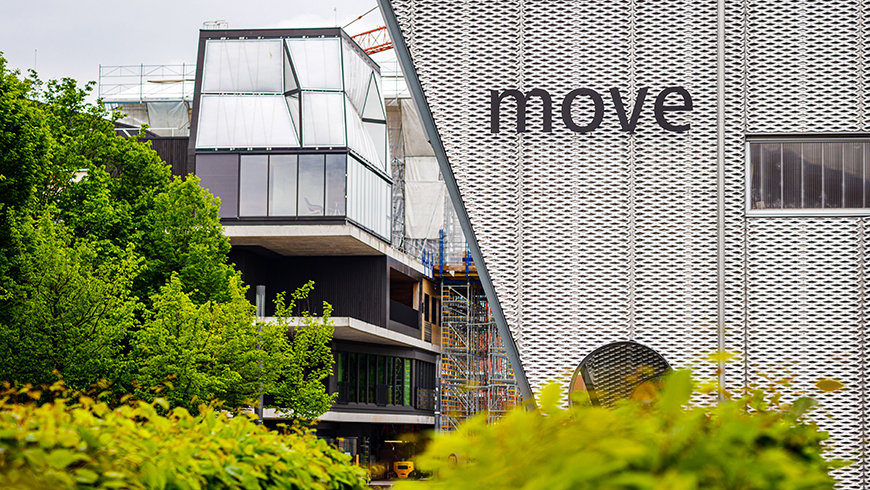Grid-friendly energy supply for buildings
Buffering peak loads with hydrogen

Heating systems in buildings currently cause around a quarter of Switzerland's CO2 emissions. The widespread use of electrically powered heat pumps is seen as one of the key steps for reducing these emissions in the building sector. However, it is also foreseeable that on the coldest days of the year, the electricity required to operate heat pumps will rise sharply. This peak load operation will require not only the expansion of electricity production capacity but also a massive expansion of the distribution grids.
One solution – or at least a mitigation – to this problem could be the use of hydrogen in stationary fuel cells in buildings: On the coldest days of the year or when power supply is otherwise strained, a stationary fuel cell is used to produce electricity, which can then be used to operate the heat pump. What's more, the waste heat from the fuel cell can also be used to heat the building.
Real application at Empa
As part of the SWEET PATHFNDR consortium and together with the Hälg Group, the Osterwalder Group and H2 Energy AG, Empa researchers want to explore the potential of this concept. In the "H2 districts" project, which is funded by the Swiss Federal Office of Energy (SFOE), the operational principles and a simulation model for the design and operation of such a peak load supply are being developed. "We will set up a real plant on the Empa campus in Dübendorf as part of the two research platforms 'NEST' and 'move' and validate the parameters for grid-friendly operation and the CO2 saving potential," explains Philipp Heer, Head of the Energy Hub and Deputy Head of Empa's Urban Energy Systems lab.
In addition to the infrastructure of NEST and move, Empa researchers will provide their extensive expertise in the field of building automation and efficiency optimization. The Osterwalder Group is contributing its know-how in logistics and the supply of renewable hydrogen. For the integration and operation of the fuel cell, H2 Energy AG can draw on its many years of application development and the operation of the kvyreen, a hydrogen-powered fast charger for electric vehicles. The Hälg Group is contributing its expertise in building technology and is responsible for overall project management.
The project started in October 2023 and is expected to be completed in September 2025 with a planned duration of two years.
Philipp Heer
Empa, Urban Energy Systems
Phone +41 58 765 49 90
Kevin Wister
Hälg Group, Innovation Officer
Phone +41 71 243 38 41
-
Share






